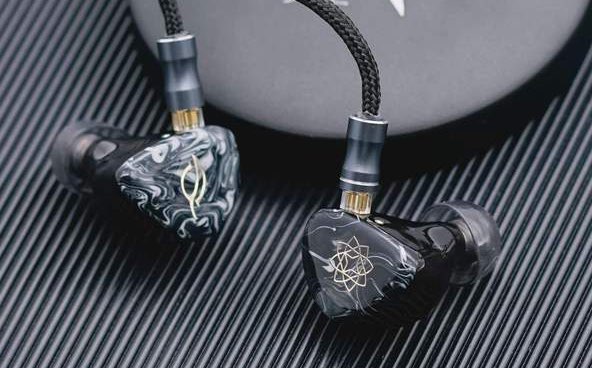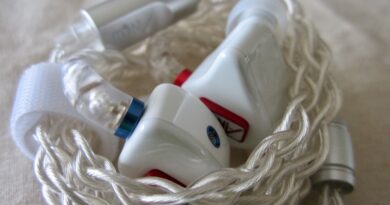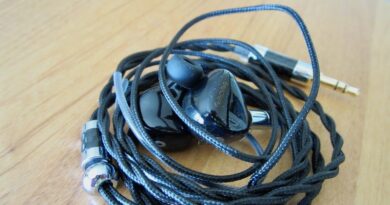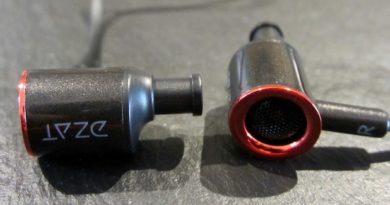SeeAudio Bravery IEM Review (1) – Young, Gifted And Whack
SeeAudio Bravery: $279 4BA IEM from upstart SeeAudio, whose prior >$1000 models seem to have garnered some acclaim. Other than the particularly incomprehensible marketing lingo on the box, packaging and accessories (including a solid metallic case and three sets of pricey Azla Sednafit tips) are very nice.
The included fabric-covered cable, however, is very microphonic and lacks any memory function, which makes fit awkward. I do note that HifiGo also sent me a lavishly-packaged Kinera Leyding cable (review to follow), which was much more-user-friendly.
Quasi-custom shaped shells are large and fairly heavy but comfortable for extended use and, especially with the grippy Azla tips, seal and isolation are excellent. Aesthetics are okay for the price point (I personally think the translucent acrylic undersides look a bit downmarket), but build is solid.
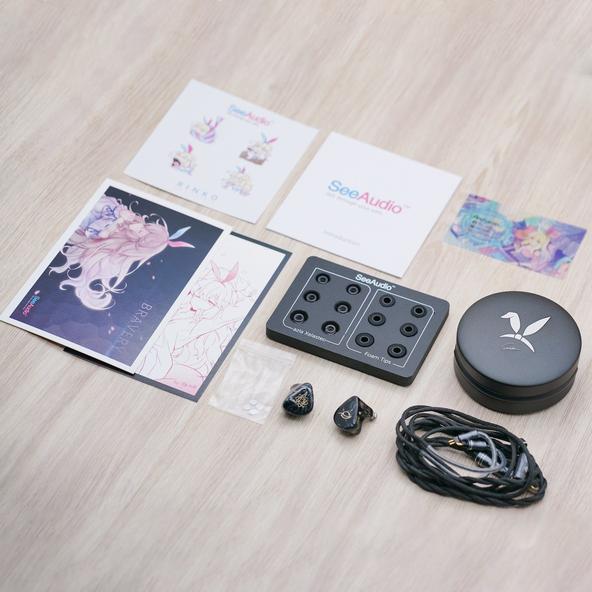
Pairing with source is hyper-critical for the SeeAudio Bravery—through much trial and error I ascertained that sources with higher output impedance (such as my Aune T1 Mk2 tube amp) made the bass sound bloated and tubby, while sources with lower output impedance, such as my Hidisz S3 dongle, considerably tightened the low end and sped up transients, albeit at the expense of some warmth and note weight. (I do believe that the Bravery is particularly susceptible to damping factors, whereby low damping makes causes slow, indistinct bass and high damping makes it leaner but cleaner).
All that said, the SeeAudio Bravery is easy to drive at 18Ohm/110dB and, surprisingly, I found my unamped, Quad-DAC equipped LG mobile to be as good a match as any. Likewise, I found the included foams to provide the best combination of low end boom and zoom.
As thus driven and tipped, the SeeAudio Bravery presents a mildly U-shaped signature with a bright tonality and a lush note texture. This is a forward-sounding IEM, with a narrowish but deep and well-rounded soundstage which places the performance towards the middle but avoids congestion on complex arrangements. Instrument separation and layering are good but there’s not a ton of air between the performers.
NOTE: The upgraded Kinera Leyding cable audibly widens the stage and increases the sense of space between musicians. Low end is impactful for an all-BA–subbass isn’t deep as good DD sets and, at least with the stock cable pitch resolution isn’t optimal and the lowest notes can sound slightly monotonic on some material (although, again, the upgraded cable improves low-end resolution, especially on electric bass).
The SeeAudio Bravery does avoid excessive bloom and has plenty of midbass presence and volume. Mids are slightly behind but very clear; male voices have a lot of body. There’s a considerable rise and added energy in the upper mids and lower highs, which can make female voices and synths sound a bit sharp or shouty at times.
Treble is well extended and very full-sounding, without the metallic edge that sometimes affects the mids. They are not as hyper-revealing or analytic as something like the NF NM2+, but retain nice sparkle despite their weighty highend presentation. Percussion is particularly vivid and crisp and low-level details like handclaps and cymbal reverberations are captured well. Integration between frequencies is good but not perfect—again the mids stand out just a little.
Tonally, the SeeAudio Bravery by no means aspire to transparency or audiophile accuracy—there’s a definite coloration to their sound which injects a lot of sheen and aliveness to the proceedings; uptempo genres have a real toe-tapping quality even if, as noted, these can sound a bit metallic at times.
Well regarded, comparably-priced players like the Logitech UE900S or the JVC FXD1 are better at the technicalities, with more accurate, less colored timbre, better coherence and a smoother, less spiky midrange, while the Aune Jasper is likewise more refined and coherent, with better-tuned bass. However, the SeeAudio Bravery trumps all the aforesaid in that hard-to-define quality of listener engagement—it simply sounds bigger, bawdier and more exciting.
I remain undecided if the SeeAudio Bravery is a good value at $279—it probably comes down to whether you favor its more dynamic, spicier quality over the more tonally accurate quality of a Moondrop, Shozy, etc.
Consider, however, that unlike most of its peers, which require a DAP or amp to sound good, the SeeAudio Bravery works well with a humble phone (although you’d also be well-advised to upgrade the cable, so perhaps it’s a wash). Undoubtedly, the bold tuning, with its aggressive upper mids, will prove polarizing and/or exhausting to some. BUT they dorock hard. Which, at the end of the day, is tough to put a price on.
Disclaimer: Sent to me gratis by HifiGo for review purposes. From our experience, HifiGo is certainly aggressive about pushing out samples, but have never solicited (tacitly or otherwise) favorable reviews nor (unlike most of their competitors) gotten pissy when we’ve panned one of their products. So kudos to them.

